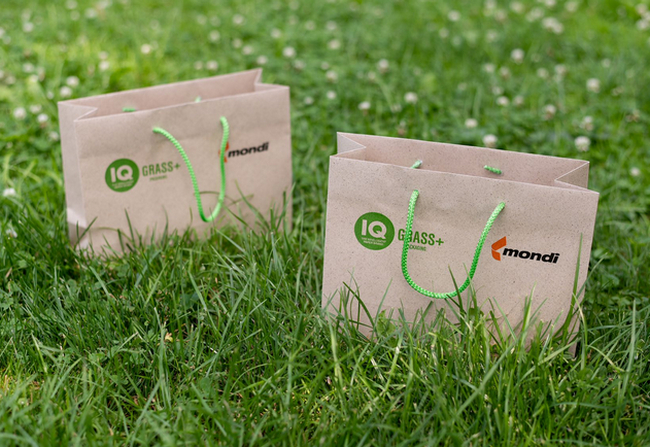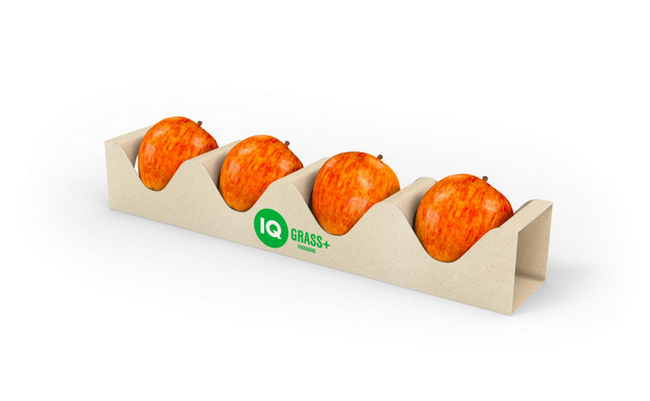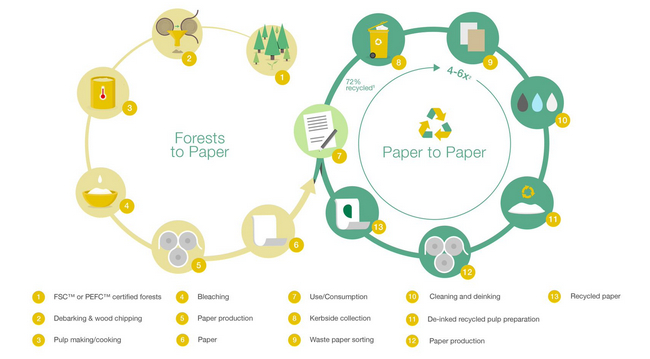Recycling is just the beginning: In order to create a truly sustainable paper industry, both manufacturers and consumers need to improve the lifecycle of paper as a whole – and think outside the box along the way. Responsible forestry management and the reduction of energy consumption and greenhouse gas emissions in production all help to establish paper as a sustainable and climate-friendly material.
Which packaging material is the best in terms of sustainability? The general opinion on which material is the most environmentally friendly has changed throughout the decades, from paper to plastic back to paper. In the context of the sustainability movement, the popularity of paper is soaring due to its high recyclability. Despite increased efforts to recycle plastic, there is still a lot of room for improvement. Plastic packaging still consists of up to 89 percent virgin material. Glass appears as an attractive packaging material due to its high reusability, but there is a caveat: Melting glass for recycling purposes requires high temperatures, which in turn drive up energy consumption.

Opportunities and limitations of paper recycling
In Europe, over 73 percent of the paper on the market is recycled. This puts Europe almost at the natural recycling limit of around 78 percent. The remaining 22 percent is accounted for by books, hygiene products or important documents that are stored for a longer period of time. However, paper cannot be recycled an infinite number of times. After four to six life cycles, the fibres will become simply too short. Therefore, a certain amount of virgin fibre in circulation is necessary to continue recycling and thus keep the sustainability cycle going. However, there is also a life beyond waste paper for the paper fibres that are far too short; for instance, they can be recycled as environmentally friendly blow-in insulation material for buildings. The non-profit organisation Cepi (European association representing the paper industry), for example, is campaigning for a European waste policy that promotes the recycling of paper and improves the flow of recycled fibres into the supply chain.

Sustainable forest management
Since it is not possible to recycle paper for an infinite amount of times, the extraction and processing of virgin fibres remains necessary. Cellulose is a sustainable but slowly renewable raw material. It is therefore necessary to create resilient forestry areas in view of changing climate conditions and in harmony with the entire ecosystem.
The challenge of sustainable forest management has been proactively addressed by many players in the paper industry for many years. Manufacturers such as Mondi have therefore been taking cultivation into their own hands for some time and have been focusing on sustainable forest management. For its paper mills around the world, Mondi only uses pulp from forests that are sustainably managed - whether by the company itself or by its partners. Certain third-party certifications, such as FSC® or PEFC™, provide customers with guidance when selecting a sustainable product.

Wood is not the only answer
Grass is currently emerging as a promising alternative and supplement to wood in paper production, as this raw material regrows particularly quickly. It is true that a certain amount of cellulose must still be added to grass paper in order to give the paper the necessary stiffness. Nevertheless, fresh fibre consumption can be reduced by the addition of grass fibers.
For example, Mondi currently uses 30 percent grass fibres in its IQ GRASS+ PACKAGING grass paper. Compared to conventional uncoated fine papers, IQ GRASS+ PACKAGING is significantly more tear-resistant due to the addition of the coarser grass fibre. In addition, the grass paper is optimised for flexo printing processes, which are used particularly for printing of packaging. Thanks to food safety certifications, Mondi's grass paper can be used for packaging like pure cellulose products.

Production as a key factor in energy savings
In addition to the use of rapidly renewable, alternative raw materials, the reduction of greenhouse gas emissions is a crucial step on the way to sustainable paper production. In addition to preserving and promoting CO2-binding ecosystems, paper manufacturers are also focusing on energy efficiency measures and electricity from renewable sources.
Mondi is actively working to reduce the CO2 emissions of its own production and has already implemented savings of 45 percent since 2004. By 2050, the company plans to reduce greenhouse gas emissions by 72 percent compared to 2014 emission levels. On the way to this ambitious climate target, Mondi is relying on biomass as an energy source, among other things, and is investing in the modernisation of its production sites and the improvement of energy efficiency. For these efforts, Mondi in 2020 was one of only ten companies worldwide to be awarded a triple A score by the CDP for its environmental performance in the areas of climate, forest, and water security. In addition, Mondi has been offering almost its entire portfolio from the Austrian Mondi Neusiedler mill as CO2 neutral since April 2021, helping customers to improve their carbon footprint.
Open communication for more sustainability
The paper industry is increasing its efforts to lead paper business into an even more sustainable future. Increased public interest is fueling this shift in thinking. Through providing industry-wide transparency about the way material is sourced, paper manufacturers can also support consumers in their decision-making process. Information about the CO2 neutrality of products on packaging, information material for customers, and also recognised third party certifications such as FSC™, PEFC™ or the EU Ecolabel provide customers with an objective basis for decision-making and support the change in the paper market towards greater sustainability.
Author: Bernhard Cantzler, Head of Marketing & Innovation Mondi UFP
